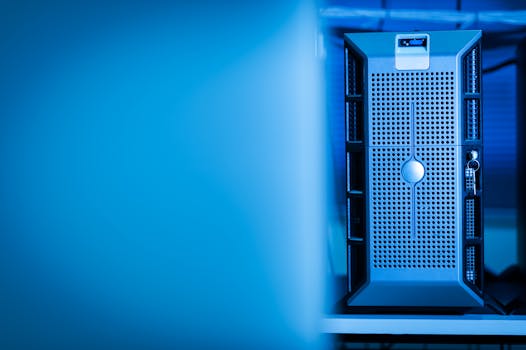
LEO Satellites: Revolutionizing Global Connectivity with Low Earth Orbit Technology, LEO Satellites are at the forefront of a revolution in global connectivity. With their ability to provide faster and more reliable connections than traditional satellite systems, LEO satellites are transforming the way we communicate and access information. In this article, we will delve into the world of LEO satellites, exploring their history, benefits, and applications, as well as the challenges and future directions of this rapidly evolving technology.
Low Earth Orbit (LEO) satellites are a type of satellite that orbits the Earth at an altitude of approximately 160 to 2,000 kilometers. This is much lower than the Geostationary Orbit (GEO) used by traditional satellites, which orbit at an altitude of around 36,000 kilometers. The lower altitude of LEO satellites allows them to provide faster and more reliable connections, with lower latency and higher bandwidth than traditional satellite systems. This makes LEO satellites ideal for applications that require real-time communication, such as video conferencing, online gaming, and remote sensing.
History of LEO Satellites
The concept of LEO satellites has been around for several decades, but it wasn’t until the 1990s that the technology began to take shape. One of the first LEO satellite constellations was the Iridium system, launched in the late 1990s. Although the system was initially intended for satellite phone communications, it paved the way for the development of modern LEO satellite technology. Since then, numerous companies, including SpaceX, OneWeb, and Amazon’s Kuiper Systems, have launched their own LEO satellite constellations, with many more planned for the future.
These constellations typically consist of hundreds or even thousands of small satellites, each weighing around 100-200 kilograms. The small size and low weight of these satellites make them cheaper to launch and maintain than traditional satellites, which can weigh up to 6,000 kilograms. The use of smaller satellites also allows for greater flexibility and scalability, as new satellites can be launched and integrated into the constellation as needed.
Benefits and Applications of LEO Satellites
LEO satellites offer a range of benefits and applications, including global connectivity, remote sensing, and navigation. One of the primary advantages of LEO satellites is their ability to provide high-speed internet access to remote and underserved communities. By offering faster and more reliable connections than traditional satellite systems, LEO satellites can help bridge the digital divide and provide equal access to information and opportunities.
LEO satellites are also used for remote sensing applications, such as monitoring crop health, tracking weather patterns, and detecting natural disasters. The high-resolution images provided by LEO satellites can be used to monitor and respond to emergencies, such as hurricanes, wildfires, and earthquakes. Additionally, LEO satellites can be used for navigation, providing accurate location and timing information for a range of applications, including aviation, maritime, and land transportation.
Another significant benefit of LEO satellites is their potential to support the Internet of Things (IoT). The low latency and high bandwidth of LEO satellites make them ideal for applications that require real-time communication, such as smart cities, industrial automation, and autonomous vehicles. By providing a reliable and secure connection, LEO satellites can enable the widespread adoption of IoT technologies, transforming industries and improving lives.
Challenges and Future Directions
Despite the many benefits and applications of LEO satellites, there are also several challenges and limitations to consider. One of the primary concerns is the risk of space debris, as the large number of satellites in LEO can increase the risk of collisions and create a hazardous environment for other space-based assets. To mitigate this risk, companies and regulatory agencies are working to develop guidelines and standards for responsible satellite operations and debris mitigation.
Another challenge facing the LEO satellite industry is the need for spectrum allocation and management. As the number of LEO satellites increases, there is a growing demand for radio frequency spectrum to support communication services. Regulatory agencies, such as the Federal Communications Commission (FCC), are working to allocate and manage spectrum resources, ensuring that LEO satellites can operate safely and efficiently.
Looking to the future, LEO satellites are likely to play an increasingly important role in the development of global connectivity and the IoT. As technology continues to evolve, we can expect to see even faster and more reliable connections, with lower latency and higher bandwidth. The use of advanced materials and manufacturing techniques will also enable the development of smaller, lighter, and more efficient satellites, reducing costs and improving performance.
Conclusion
In conclusion, LEO satellites are transforming the way we communicate and access information, offering faster and more reliable connections than traditional satellite systems. With their ability to provide global connectivity, remote sensing, and navigation, LEO satellites are poised to play a critical role in the development of the IoT and the digital economy. As the technology continues to evolve, we can expect to see even greater benefits and applications, from smart cities and industrial automation to autonomous vehicles and beyond.
As we look to the future, it is essential to address the challenges and limitations of LEO satellites, including the risk of space debris and the need for spectrum allocation and management. By working together, companies, regulatory agencies, and governments can ensure that LEO satellites are developed and operated in a responsible and sustainable manner, providing a safe and efficient environment for the benefit of all.





